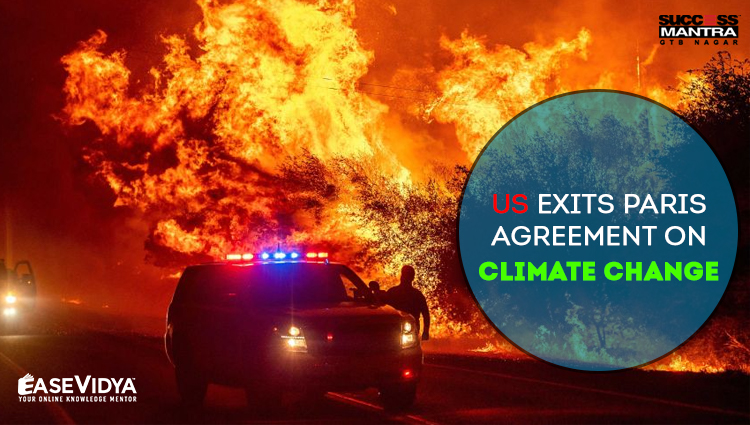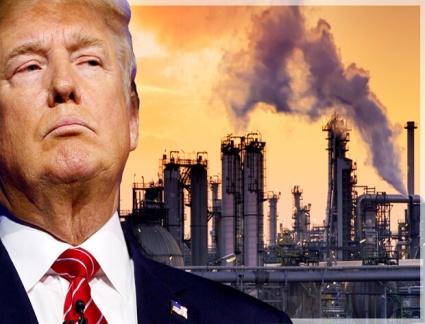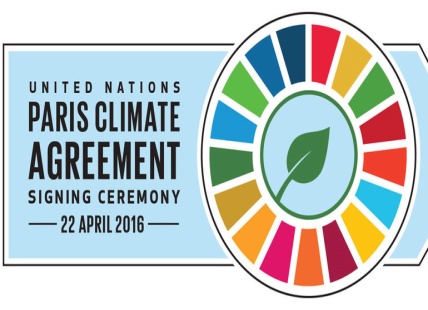
US EXITS PARIS AGREEMENT ON CLIMATE CHANGE
US EXITS PARIS AGREEMENT ON CLIMATE CHANGE

On June 1, 2017, United States President Donald Trump announced that the U.S. would cease all participation in the 2015 Paris Agreement on climate change mitigation, and begin negotiations to re-enter the agreement "on terms that are fair to the United States, its businesses, its workers, its people, its taxpayers," or form a new agreement. In withdrawing from the agreement, Trump stated that "The Paris accord will undermine (the U.S.) economy," and "puts (the U.S.) at a permanent disadvantage."
In accordance with Article 28 of the Paris Agreement, a country cannot give notice of withdrawal from the agreement before three years of its start date in the relevant country, which was on November 4, 2016 in the case of the United States. The White House later clarified that the U.S. will abide by the four-year exit process. On November 4, 2019, the administration gave a formal notice of intention to withdraw, which takes 12 months to take effect. Until the withdrawal took effect, the United States was obligated to maintain its commitments under the Agreement, such as the requirement to continue reporting its emissions to the United Nations. The withdrawal took effect on November 4, 2020, one day after the 2020 U.S. presidential election. After it leaves, the US will be the only country left out of the global protocol. Syria and Nicaragua, the last remaining countries who were earlier holding out, also became signatories in 2017.
PARIS AGREEMENT ON CLIMATE CHANGE
The Paris Agreement of 2016 is an international accord that brings almost 200 countries together in setting a common target to reduce global greenhouse emissions in an effort to fight climate change. Parties to UNFCCC agreed to strive to limit the rise in global warming to well less than 2 degrees Celsius and to try and limit the temperature increase even further to 1.5 degrees Celsius, over pre-industrial levels by 2100, under the Paris Agreement.
Nationally determined contributions (NDCs) were conceived at Paris summit which require each Party to prepare, communicate and maintain successive nationally determined contributions (NDCs) that it intends to achieve. Parties shall pursue domestic mitigation measures, with the aim of achieving the objectives of such contributions. Paris Agreement replaced earlier agreement to deal with climate change, Kyoto Protocol.
PROCEDURE & REASON OF EXITING THE AGREEMENT

• Article 28 of the Paris Agreement allows countries to leave the Paris Agreement and lays down the process for leaving. A country can only give a notice for leaving at least three years after the Paris Agreement came into force. This happened on November 4, 2016. Therefore, the US was eligible to move a notice for leaving on November 4 this year, which it did. The withdrawal is not immediate, however. It takes effect one year after the submission of the notice. It means the United States will be out of the Paris Agreement only on November 4 next year.
• During his 2016 presidential campaign, Donald Trump had said the Paris Agreement was “unfair” to US interests. He had promised to pull out of the Agreement if he was elected. The United States is the world’s second largest emitter of greenhouse gases. If it does not reduce its emissions befitting its status as the second largest emitter, it could seriously jeopardise the world’s objective of keeping the global temperature rise to within 2 degrees Celsius from pre-industrial times.
• As part of its commitment to the Paris Agreement, the United States had promised to reduce its emissions by 26 per cent to 28 per cent by the year 2025 from 2005 levels. The United States plays a prominent role in mobilising financial resources globally, and its absence from the scene could seriously hamper that effort. Under the Paris Agreement, developed countries are under obligation to mobilise at least $100 billion every year from the year 2020 in climate finance meant for the developing world. This amount has to be revised upwards after five years. As it is, countries are struggling to reach this amount by next year. The US was opposed to this move.
IMPLICATIONS OF THE US EXIT FROM THE AGREEMENT
The biggest impact of the exit of the United States from the Agreement might be on the financial flows to enable climate actions. The United States is the world’s second largest emitter of greenhouse gases. If it does not reduce its emissions befitting its status as the second largest emitter, it could seriously jeopardize the world’s objective of keeping the global temperature rise to within 2 degrees Celsius from pre-industrial times.
Under the Paris Agreement, developed countries are under obligation to mobilise at least $100 billion every year from the year 2020 in climate finance meant for the developing world. The exit of USA might hamper these efforts too. While exiting the Paris Agreement does not automatically mean the abandonment of this target or of any future action by the United States on climate change, it would no longer be committed to the targets recommended by the Paris Agreement.
However US can re-join the agreement whenever it wishes to do so. There is no bar on a country re-joining the Paris Agreement. It is also possible that the United States does a rethink and actually never leaves the Paris Agreement. It has one full year to reconsider its decision.
OTHER RELATED INITIATIVES ON CLIMATE CHANGE

UNFCCC is an international environmental treaty adopted on 9 May 1992 and opened for signature at the Earth Summit in Rio de Janeiro from 3 to 14 June 1992, entered into force on 21 March 1994. The UNFCCC objective is to stabilize greenhouse gas concentrations in the atmosphere at a level that would prevent dangerous anthropogenic interference with the climate system. Currently, there are 197 Parties (196 States and European Union) to the United Nations Framework Convention on Climate Change.
• Kyoto Protocol: The Kyoto Protocol is an international agreement linked to the UNFCCC, which commits its parties by setting internationally binding emission reduction targets. The Kyoto Protocol was adopted in Kyoto, Japan in 1997 and entered into force in 2005. It recognized that developed countries are principally responsible for the current high levels of GHG emissions in the atmosphere as a result of more than 150 years of industrial activity. The detailed rules for the implementation of the Protocol were adopted at COP-7 in Marrakesh, in 2001 and are referred to as the Marrakesh Accords. Kyoto Protocol Phase-1 (2005-12) gave the target of cutting down emissions by 5%. Phase- 2 (2013-20) gave the target of reducing emissions by at least 18% by the industrialized countries.
• COP24: The 2018 United Nations Climate Change Conference was the 24th Conference of the Parties to the UNFCCC (COP24), also known as the Katowice Climate Change Conference. It was held in December 2018 in Katowice, Poland. The Conference of the Parties (COP) is the supreme body of the UNFCCC, consisting of the representatives of the Parties to the Convention. COP holds its sessions every year and takes decisions which are necessary to ensure the effective implementation of the provisions of the Convention and regularly reviews the implementation of these provisions. The aim of the conference was to finalize a rulebook for Paris agreement 2015
• The International Carbon Action Partnership (ICAP) was founded in 2007 by more than 15 government representatives as an international cooperative forum, bringing together states and sub-national jurisdictions that have implemented or are planning to implement emissions trading systems (ETS). ICAP was launched in order to join carbon markets all over the world and by that be more successful in combating climate change. ICAP includes members from the European Union Emission Trading Scheme (EU ETS), Western Climate Initiative (WCI), Regional Greenhouse Gas Initiative (RGGI), Australia, New Zealand, Norway, and the Tokyo Metropolitan Government. Japan and Ukraine are observers.
QUESTIONS (1-5)
Q.1 Which of the following countries recently withdrawn themselves from the Paris Agreement on climate change?
A. Israel
B. United Arab Emirates
C. United States of America: ANSWER
D. India
Q.2 Which of the following Article of Paris Agreement says that a country cannot give notice of withdrawal from the agreement before three years of its start date in the relevant country?
A. Article 25
B. Article 28: ANSWER
C. Article 32
D. Article 36
Q.3 UNFCCC is an international environmental treaty of which the Conference of the Parties (COP) is the supreme body of it. UNFCCC is headquartered at which of the following places?
A. Geneva, Switzerland
B. Paris, France
C. Katowice, Poland
D. Bonn, Germany: ANSWER
Q.4 Which of the following statements is/are incorrect about the implications of the US exit from the Paris Agreement?
A. US plays a prominent role in mobilising financial resources.
B. Being a world’s second largest emitter of greenhouse gases it's exit can hamper the effort.
C. US provide 200 billion dollars which is 90% of the total mobilised resources: ANSWER
D. None of the above
Q.5 Kyoto Protocol is an international agreement linked to the UNFCCC, which commits its parties by setting internationally binding emission reduction targets & was adopted in ______ in 1997?
A. Japan: ANSWER
B. China
C. South Korea
D. Malaysia












0 Comment